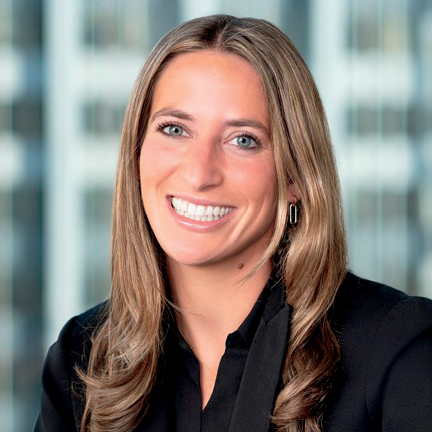
Freeing
Their
Stories

Freeing Their Stories

Aleezah Merali ’23
The students’ mission? As part of their clinical experience, and under the guidance of Nicole Mull of the Legal Aid Society, the group was developing, with great care and planning, a mitigation advocacy video for their client’s bail application. Mull is a pioneer in the cutting-edge use of mitigation videos and video advocacy in public defender offices. With the cooperation of the client, his family, and his community, the completed video will be presented to court as a part of his bail application. Other videos are being presented to prosecutors for negotiation purposes.
“Our goal is to bring our client home,” said Merali.
The students had already conducted several pre-interviews, which they recorded on their phones, with the client’s teachers, his mother, and his brother. They collected family photos, and photos of certificates their client had earned. From these interviews, the team developed questions to ask their client.
The students’ initial meeting with their client lasted for 90 minutes, in which they took copious handwritten notes on his case. They would return to Rikers twice more to develop a final script of questions for their client’s video interview. They also got a taste of bureaucracy: They navigated a monthslong approval process with the city’s Department of Correction to obtain passes to visit their client at Rikers, as well as another approval process to get permission to bring cameras into the prison and film their client.
“[Preparing the video] has been a very positive experience,” said Merali. “But in the end, it’s awful to think about why our client remains at Rikers, where conditions are terrible, in the first place.”
Innovation Through Expression

Prospective mitigation videos come to Mull via her colleagues at Legal Aid. She has honed a sense for clients and cases that would make a good fit for video mitigation. “I discuss the cases with staff attorneys and social workers, looking for cases where stories need to be told visually, rather than in writing, which is how mitigation submissions typically are presented,” said Mull.

“Even defense attorneys will stifle their clients because of the way the system inherently uses what the clients say against them,” said Bader. “In court, if a client starts to speak, the defense attorney will instruct the client to stop and say, ‘Only talk to me.’”
Clients and their families who have participated in the program have spoken to the power of being able to offer their own side of the story. “Before the video, we had no opportunity, we had no guidance, we had no way of telling our story,” said Natasha Mcintosh, the wife of Legal Aid Society client O’Neil Whyte, in a video released by Legal Aid. “The video … allowed people in the courts to see him as a person, rather than a mistake he made 20 years prior.”
In the 2021–22 academic year, Bader partnered with Mull and Legal Aid to create another pipeline for prospective mitigation videos and for help producing them: the Criminal Defense Clinic. This partnership has since continued to make video mitigation advocacy part of the students’ clinical experience. “It’s been a very fruitful collaboration,” said Bader. “Students take a deep dive into their client’s life and experiences and think about how to present their client’s life in a powerful way to convince the judge and the prosecutor that this person deserves humane treatment and consideration.”
“
The collaboration is an excellent match. Mull brings the power of video advocacy to the Criminal Defense Clinic’s low-income clients from marginalized communities who could not otherwise afford this powerful tool. Students take on the responsibility of constructing lists of questions and conduct recorded interviews with their clients, as well as their family and community members. They visit interview subjects at Rikers or in their homes and communities, devise case theories, and construct a compelling story arc to produce a video that gives the client a human face to present to the judge and prosecution.
Mull and Bader work directly with the students in crafting the mitigation videos. The Clinic takes an interdisciplinary approach. Law students and social work students work together as a team, supervised by Kaela Economos, the clinic’s social work supervisor, as well as forensic psychologists in Fordham’s Clinical Psychology doctoral program.
“It’s a way for our interdisciplinary partners to showcase their knowledge and educate the law students,” said Bader. ”Social work candidates come with certain skills and training that law students don’t necessarily get. Lawyers focus on the client’s problem and how we can solve it, while a social worker’s approach is different, evaluating clients’ strengths and resiliencies.”
This collaboration also helps prepare students planning to work in public defense. Social workers, embedded in most large public defender offices, are often the authors of mitigation submissions.
Leveling the Field
Video advocacy is on the leading edge of mitigation submissions, which are more commonly voluminous paper dossiers in support of motions for bail applications, plea negotiations, and reduced sentences. “Often what you’ll see in written submissions are attachments of letters from family and community members, social workers, and psychologists that speak to trauma or other hurdles the client has faced,” said Bader. “But these stories can lose their impact when strictly on paper.”
Sentencing videos have been used in federal court since 2005, when the U.S. Supreme Court in United States v. Booker allowed trial courts to consider a defendant’s “personal history and characteristics.” These short videos can cost between $5,000 to $25,000 or more to produce.
“People of means can pay for a production of a video about them that gives the judge and the prosecutor the opportunity to visualize, have compassion for, and get a textured look at an individual in more depth than a paper submission,” said Bader. “[This work] is leveling the playing field for clients without means.”
It’s Mull’s goal to bring mitigation videos to every public defender office throughout the country. Mull and David Simpson, the Legal Aid Society’s resident filmmaker, are working to make the technology widely accessible. “We’ve been developing a decentralized way to allow several people to work on the videos, with interns doing the research and social workers and lawyers all contributing to one video,” said Simpson. “We’re also creating a production pipeline and systematizing it so we can teach others to do this work. We’re removing the veil from the idea that creating videos by people without production expertise is overwhelming, and we look forward to public defenders and small law firms being able to use the software technology on their own.”
“Any public defender with a smartphone or Zoom account can create a video mitigation advocacy piece,” said Bader. “This is extremely important when bringing equity to the table in making these videos more ubiquitous.”
Empathetic Advocacy
Emma Green ’22, now in private practice in New York City, was among the first group of students to participate in the clinic’s video mitigation work. “We were trying a different form of advocacy. Rather than focusing on just the facts or case law, we were looking at the client as a person, and what in their background got them into their situation,” she said. “In law school, you’re just reading the facts of a case in a textbook. There doesn’t seem to be a person behind the facts in those cases. This was the first time for me since starting law school that I personally got to know a client and their story.”

Green felt that the skills she learned in interviewing clients was invaluable. “Here, you’re trying to learn about someone’s history and their life,” she said. “It taught me a different way to be empathetic. I learned to give someone a breath or a break right after they finish speaking or after answering a question to allow them to process what they had just said. … It helped to have a natural conversation and to make sure they know you are really listening to what they are saying.”
This fall, the clinic’s law students and social work students have been divided into three groups, with each group working on a different mitigation video team. The class meets weekly with Mull and Bader to share updates, exchange ideas, and discuss challenges. This work is in addition and complementary to the clinic’s courtroom component, where students attend court to represent clients charged with misdemeanors.
The work also brings the students in close proximity to felony cases, something they might not be exposed to until later in their careers. “The misdemeanor cases [I’m working on in the clinic] are very different charges than those our video mitigation clients are facing,” said Chloe Marmet ’23, a student in the clinic. “Working on cases with serious charges and making court appearances is giving us different exposures and experiences of the legal system. With the video mitigation work, there’s a greater appreciation for what the legal consequences mean for the client and for their life going forward and how the consequences would derail the life they are building.”
The impact of the challenges the video mitigation clients have faced in their lives is discussed by the clinic’s students in group brainstorming sessions. “Hearing firsthand the life experiences people face, whether it’s loss, or homelessness, or growing up without a family or in neighborhoods that face a great deal of violence, is revealing,” said Marmet. “By working on these videos, we’re getting the chance to hear about those experiences and the impact they have had on our clients and people in our clients’ lives, which have built up over the course of their lifetime.”
Marmet, who is seeking to work in public interest law after graduation, is grateful to the clinic and Legal Aid for providing meaningful and substantive experience: “Being able to interact with the client, receive direct guidance from Mull and Legal Aid, and have discussions about systemic injustices and the difficulty of navigating the legal system for so many clients … is invaluable for any direct service work, litigation work, and honestly, for representing anyone.”